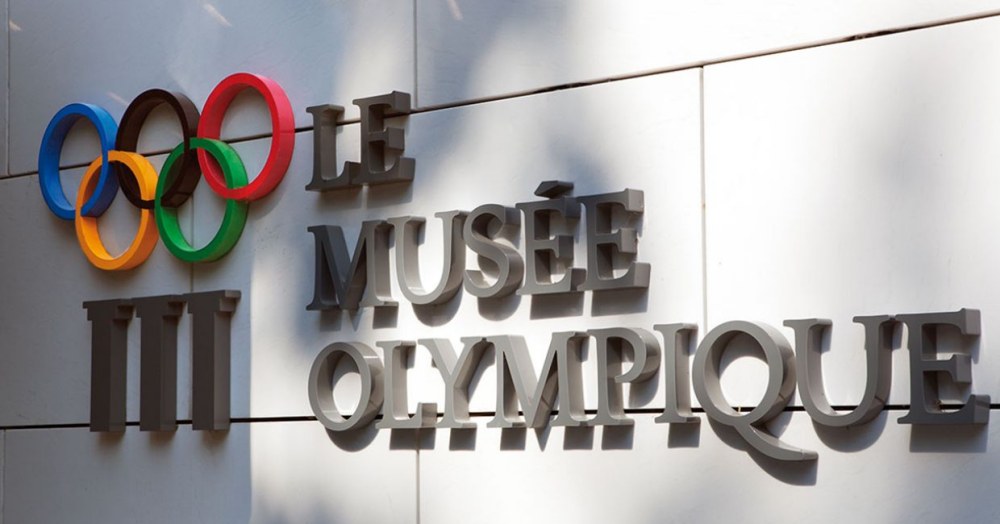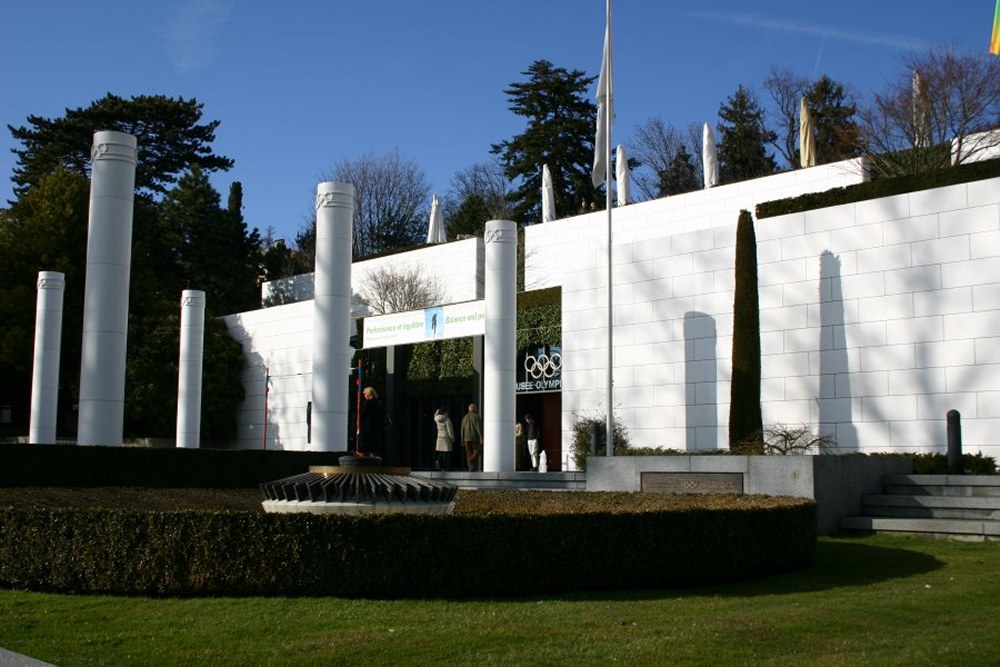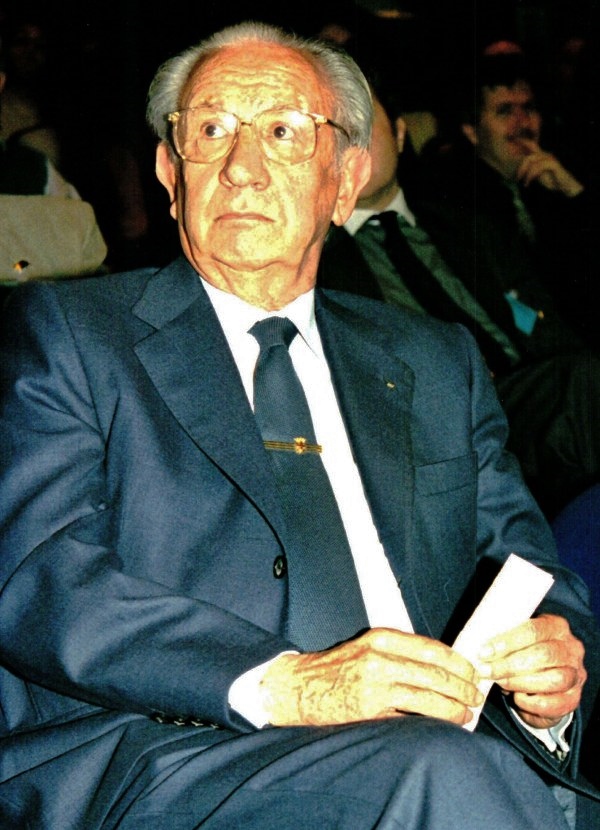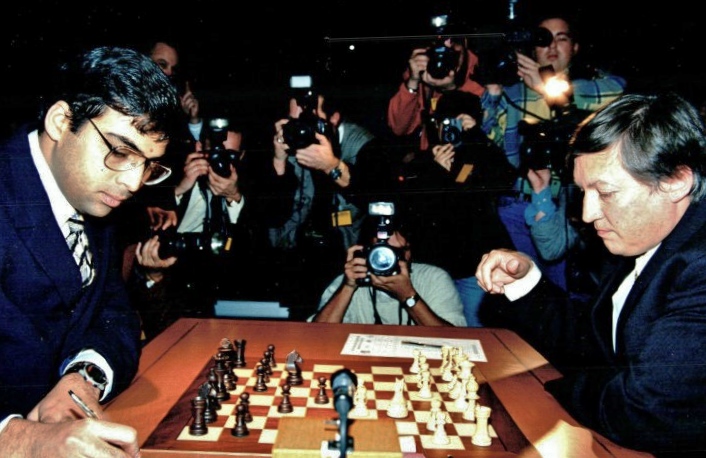Lausanne 1998: A peculiar match
Viswanathan Anand finished the year 2017 on a high note. He won the World Rapid Championship in Riyadh and finished third in the Blitz World Championship. Anand is now 48-years old but he's still able to beat Carlsen and co., today's young elite.
It is worth remembering that twenty years ago, when some of his opponents from today were still playing with toys, Anand was playing for the FIDE World Championship. From January 2nd to 9th, 1998, Anand and Anatoly Karpov played a dramatic match in Lausanne. It was the final and the highlight of the first Knock-Out-World Championship which was played in December 1997 in Groningen, the Netherlands.

The Olympic logo on the museum | Source: swissolympicteam.ch
After Anand had won the demanding knock-out tournament he immediately went to Lausanne on New Year's Eve to play against Karpov — without time for a break. Before the final, Anand had already played 23 World Championship games whereas the Russian former World Champion was seeded for the final and was fresh — and many thought that this mode of playing for the World Championship was unfair. The world's best player, Garry Kasparov, did not even start in Groningen, arguing that since 1886 the World Championship had always been decided in a long match between the reigning champion and his challenger.
Vladimir Kramnik, back then number two in world, too, boycotted the World Championship in Groningen because he did not agree with the privileges given to Karpov.
The venue of the chess spectacle was the Olympic Museum in Lausanne, located directly at Lake Geneva. Landlord of the beautiful building was Juan Antonio Samaranch, at that time President of the International Olympic Committee. He welcomed FIDE President Kirsan Ilyumshinov with open arms — and open hands. Samaranch received millions to rent the house to FIDE.

The Olympic Museum in Lausanne | Photo: Dagobert Kohlmeyer
The first DVD with videos from Anand's chess career reflects the very beginning of that career and goes as far as 1999. It starts with his memories of how he first learned chess and shows his first great games (including those from the 1984 WCh for juniors). The high point of his early developmental phase was the winning of the 1987 WCh for juniors. After that, things continue in quick succession: the first victories over Kasparov, WCh candidate in both the FIDE and PCA cycles and the high point of the WCh match against Kasparov in 1995.
Running time: 3:48 hours
A slow start with long game
Janurary 2, 1998 — The President of the IOC opens the first game with the symbolic first move and pushes Karpov's queen pawn two squares ahead. This move is the beginning of a game that will last for 108 moves and will become the longest first game in the history of World Championship matches. On the 31st move Karpov surprises Anand with a fantastic queen sacrifice which later leads to an endgame in which Karpov has two rooks and two pawns against Anand's bare queen and slowly grinds down his opponent who is 18 years his junior.
But Anand bounces back. On day two the players discuss a line of the Ruy Lopez and Anand wins a game that is not without faults but very exciting.
The third game lasts only 19 moves — before the first and only rest day in Lausanne both players want to avoid any risk.
Chess as an Olympic discipline?
Juan Antonio Samaranch visited the match every day to follow the games. At that time FIDE tried to make chess an Olympic discipline and Samaranch was welcoming this idea in principle. On the free day I had the chance to interview him. During his presidency the man from Barcelona paved the way for professional athletes to enter the Olympic games and acquired astronomical sums to market the games. But he welcomes me in his impressive office in a friendly way and answers my questions politely.

IOC President Juan Antonio Samaranch | Photo: Dagobert Kohlmeyer
Of course, I want to know whether chess has a real chance to become an Olympic discipline. When I ask Samaranch about this he smiles and says that he does not play chess well, and would only play occasionally against his grandsons. But he thinks the leading chess professionals would be interesting personalities.
Do you think that chess is a real sport?
Well, that is complicated. There are about 200 countries on earth. In half of them chess is recognised as a sport, the other half sees chess more as part of culture. We need a clear definition of what sport is.
But there are tough competitions in chess.
The main criterion of sport is competition, true. Chess meets this criterion. Other criteria are more difficult, e.g. if we consider the physical aspect. Of course, top players have to be fit but it is not a movement sport.
That means the chances are small that chess players will see their discipline as part of the Olympic games?
We have to treat this issue step by step. After all, chess is now acknowledged as official member of the Olympic family. By changing the World Championship format to a knock-out format FIDE made an interesting step. The great final is played in the Olympic Museum, fine. The future will show how things will continue.
Where could chess find its place: at the Olympic winter or summer games?
There is a clear definition for the winter games. The disciplines have to be linked to ice and snow. Otherwise you could of course play chess in winter. And as far as the summer games are concerned there is a long list of attractive sports that want to become Olympic disciplines.
When leaving Samaranch I thought: "Well, Ilyumzhinov's grandiose dreams of Olympia will not be realised".
This was 20 years ago and since then there has not been any progress in this direction. But chess players have their own Olympiad, after all.
A fighting final
The next day the World Championship match continues. Anand plays with white. Karpov opts for Caro-Kann and solves all his opening problems. Now Anand makes a couple of inaccurate moves and in the end Karpov's passed pawns decide the game. It is the first time that Karpov won with Black against Anand.
The Caro Kann is a very tricky opening. Black’s play is based on controlling and fighting for key light squares. It is a line which was very fashionable in late 90s and early 2000s due to the successes of greats like Karpov, Anand, Dreev etc. Recently due to strong engines lot of key developments have been made and some new lines have been introduced, while others have been refuted altogether. I have analyzed the new trends carefully and found some new ideas for Black.
After a tough game five which ends in a draw after 55 moves Karpov leads 3-2.
Anand has to win the sixth and final game to equalise the match and to reach the tie-break. And he succeeds — with the Trompovsky!
Tap into your creative mind and start the game on a fresh note. The Trompowsky (1.d4 Nf6 2.Bg5) is an opening outside of conventional wisdom. Create challenges and make your opponent solve problems early on.
The rules stipulate the the tie-break has to be played on the same day. Anand, whose strength in rapid chess is well-known, is considered to have good chances. But Karpov profits from the professional approach of his fitness coach Valery Krylov who gives the Russian a relaxing massage before the tie-break to prepare his protégé for battle.
Finally, Anand's nerves also begin to show. In the first game Anand reaches an excellent position and has ten minutes more on the clock when he suddenly makes mistakes that are hard to explain and led to a loss.
In the last game Anand cannot bounce back. He overpresses and goes down with flying colours. For Anand it's a bitter end of the World Championship.
Karpov kept his title of FIDE World Champion for another year until Alexander Khalifman dethroned him in Las Vegas 1999. But in 2000 Anand finally became FIDE World Champion after winning the knock-out tournament in Delhi and beating Alexei Shirov in the final in Tehran.
The match between Karpov and Anand was played twenty years ago. What will happen in another twenty years, in 2038? Maybe the chess magician Anand will still move the pieces with impressive strength? Good luck Vishy!
On this DVD a team of experts looks closely at the secrets of Karpov's games. In more than 7 hours of video, the authors examine four essential aspects of Karpov's superb play.
Vishy Anand is one of the greatest chess talents of all times. On this DVD he speaks about his career, his views on chess, and presents the most beautiful and interesting games of his career.
Translation from German: Johannes Fischer


























